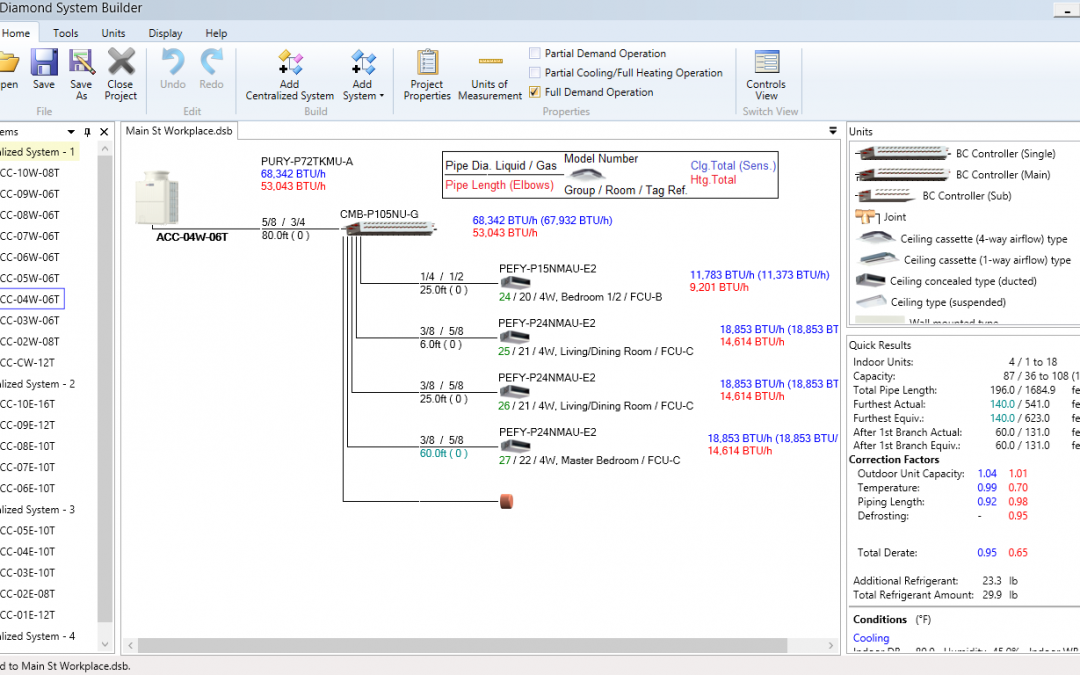Overview
We have developed a number of equipment selection software tools over the years. While this type of software is not the sexiest type of software out there and its user-base is quite small compared to games or word processors, we feel that this type of software is quite interesting to develop. I’d like to share a bit about our experiences with developing 2 different types of equipment software selection tools for several large HVAC manufacturing companies.
Definition
What is equipment selection software exactly? It is a computerized or digital tool that allows users to properly choose the correct HVAC manufacturer’s model equipment based upon a wide variety of input and/or output parameters. Depending upon the type of equipment, the parameters can vary greatly. For example, HVAC humidification equipment requires input parameters such as outdoor weather conditions, elevation, indoor air temperature and humidity, and required outlet air conditions.
Users of this type of software include HVAC engineers, manufacturers representatives, and manufacturer salespeople. These tools can be web, tablet, or desktop based software applications.
Mitsubishi Electric
We were hired by Mitsubishi Electric (ME) of America to develop an equipment selection desktop software tool for their line of VRF (variable refrigerant flow) HVAC equipment. They insisted that the tool have a graphically intensive user interface with lots of drag-and-drop functionality. The software tool would allow users to lay out a schematic of the VRF system including the outdoor unit, indoor units, connectors, pipes, and other components. The tool would be strictly rule-based so it would inform the user as to whether a certain length of pipe was allowed or if a certain model outdoor unit could be paired with a specific indoor unit. The types of outputs were numerous including PDF reports, AutoCAD schematics, spreadsheet outputs, XML, and even proprietary file format output to a Mitsubishi controller.
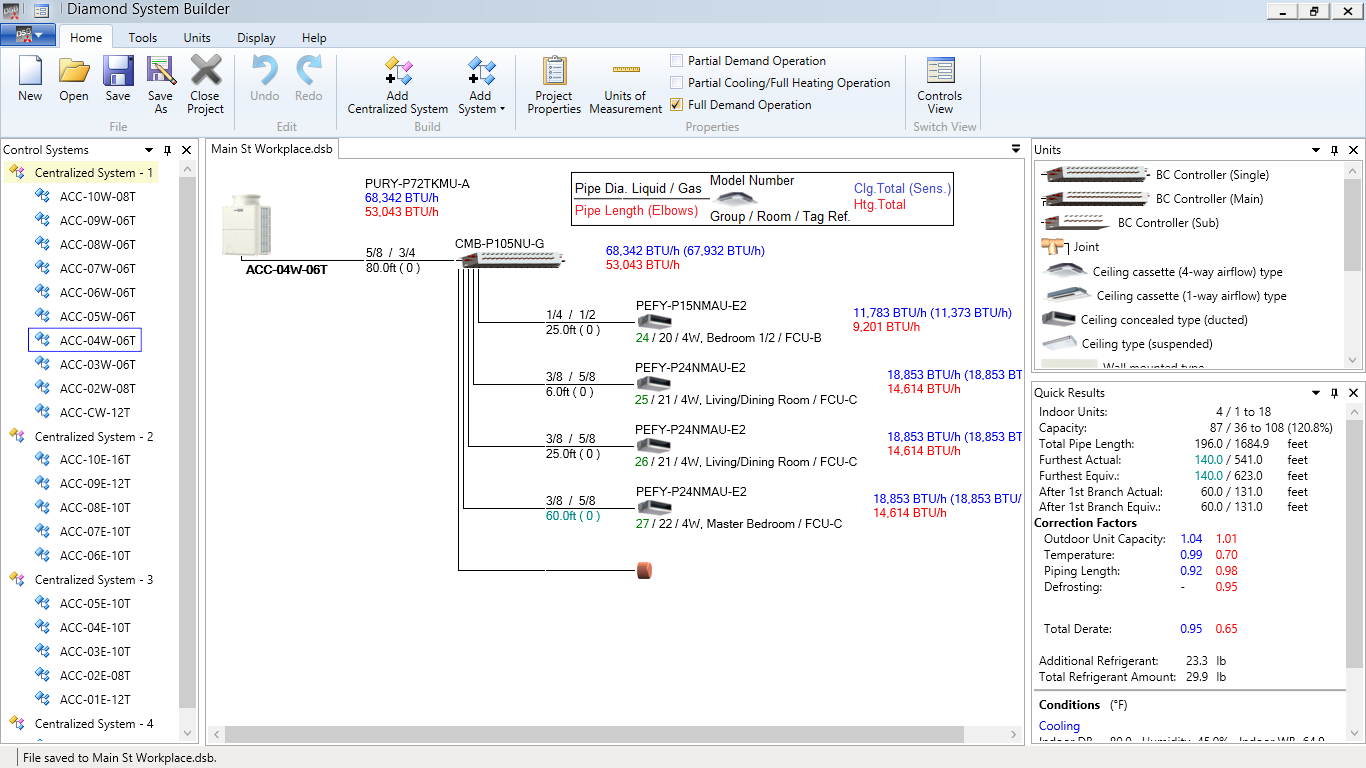
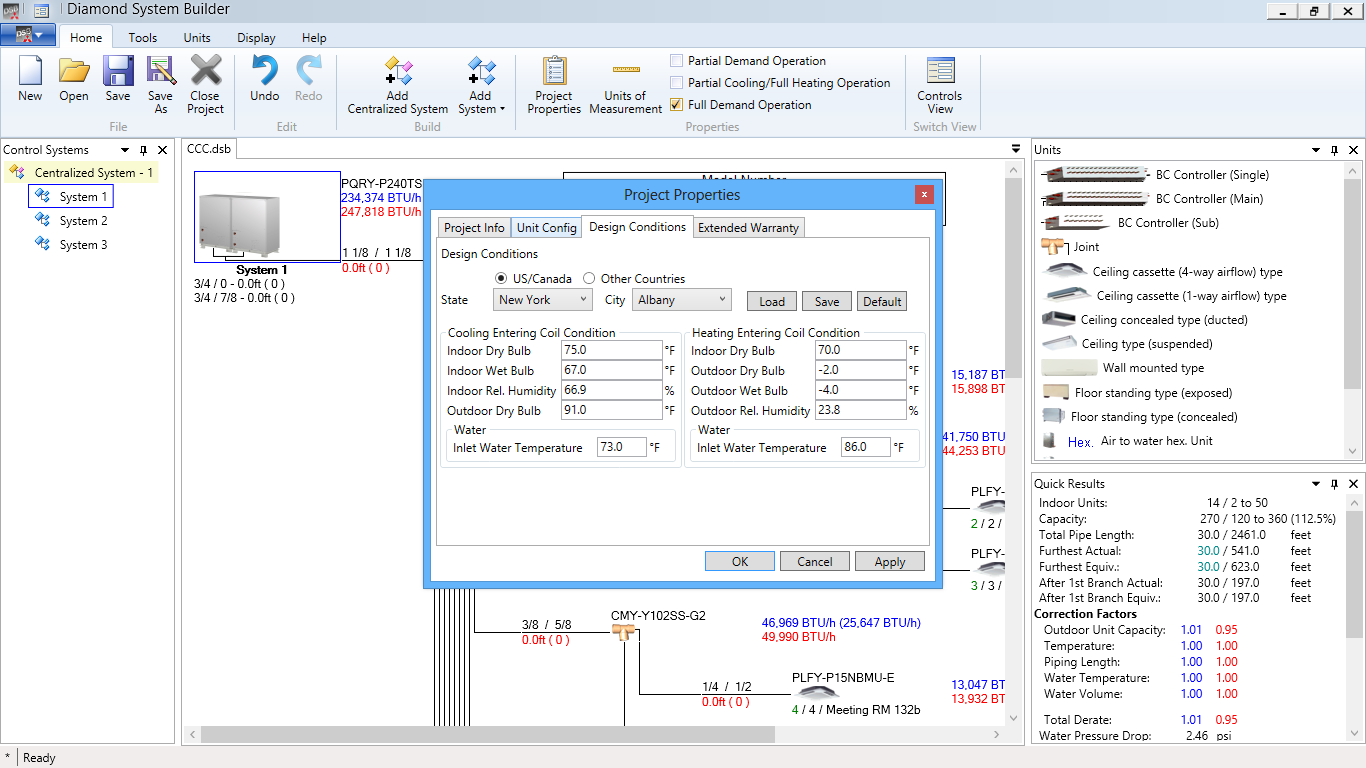
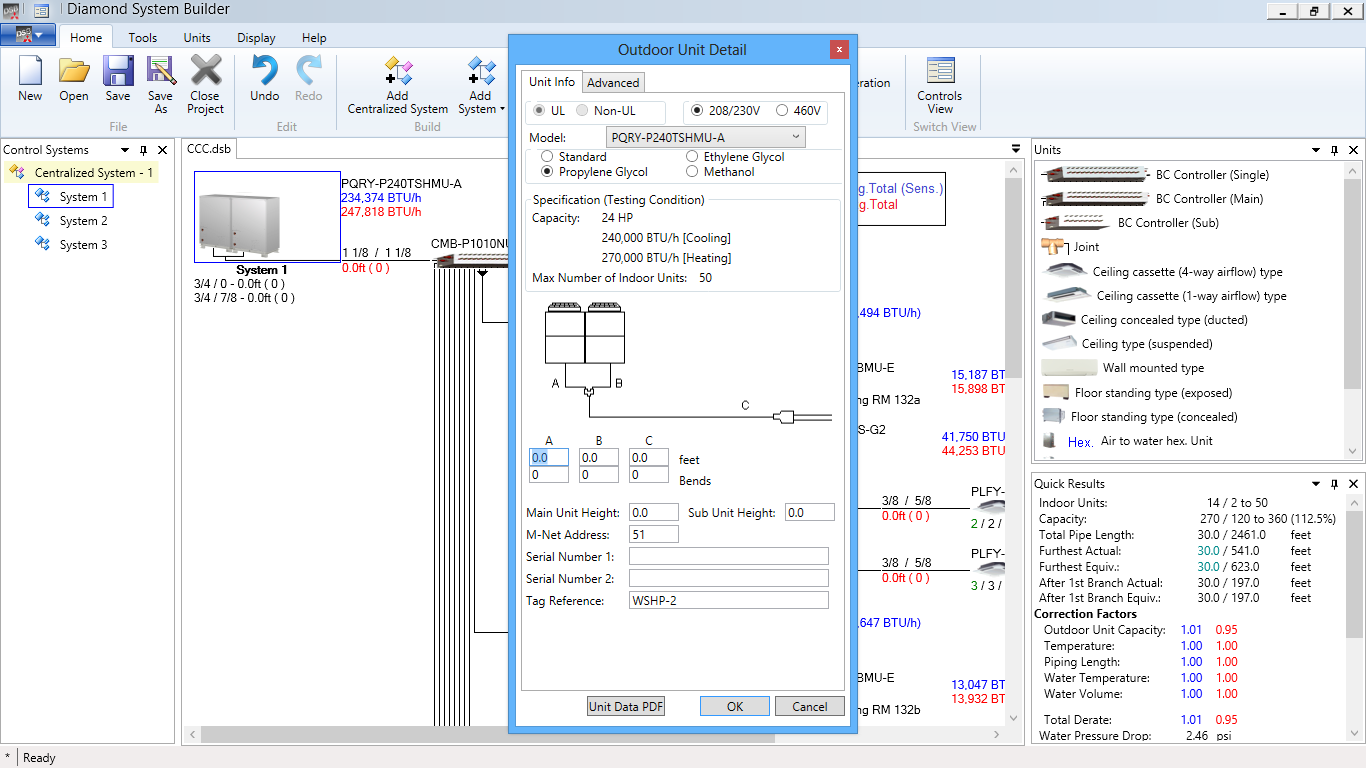
Other functionality included the ability to dynamically update and add new equipment model information, localization include language and regional models for different areas of the world, and ability to layout controls wiring.
This projected took about 3 years to fully develop and finally deploy to end users including Mitsubishi engineers, resellers, and salespeople.
Some takeaways from this project:
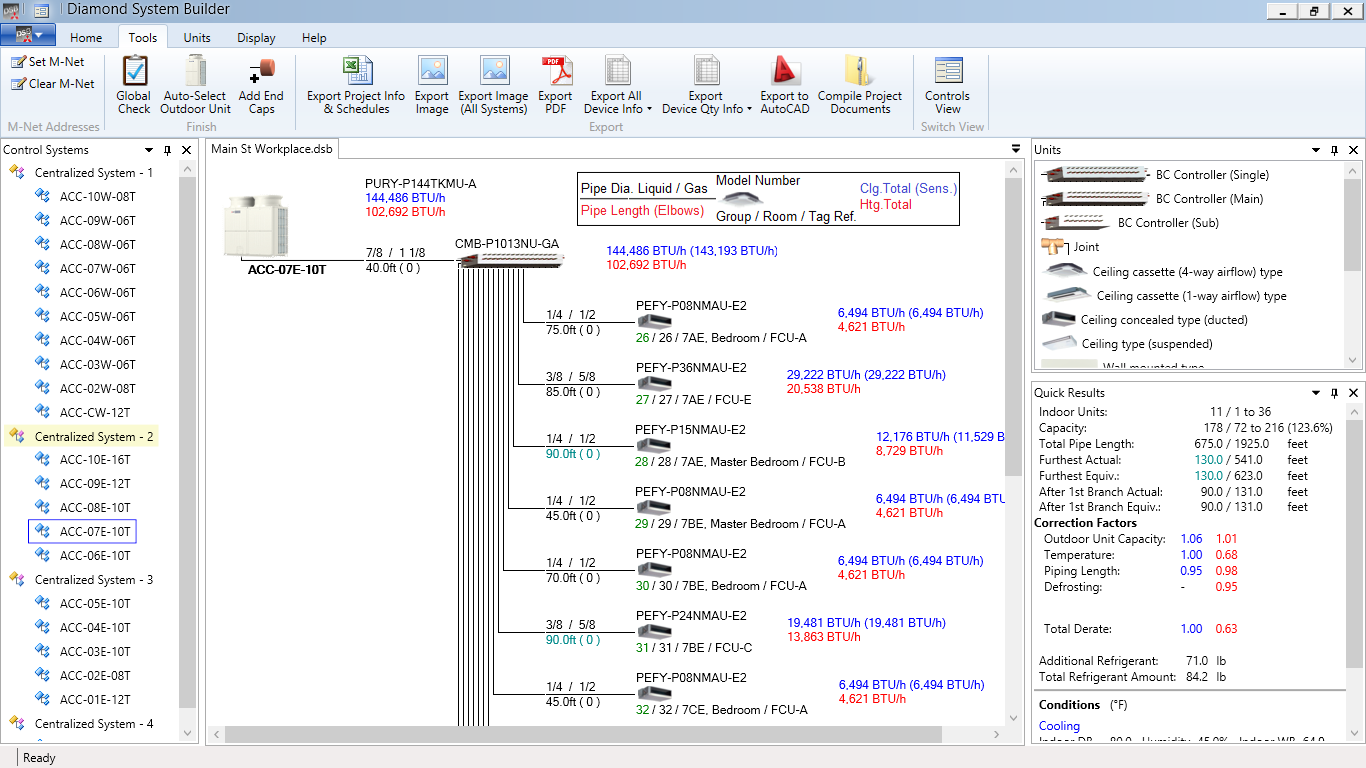
1. It took much longer to develop than originally planned (no surprise, here). Between changing requirements and long approval waiting periods, the timeline almost tripled.
2. Localizing software tools is a very complex endeavor. It not only involves translation files for one or more languages, but it also involves filtering equipment selections depending upon the region of the world. Also, numerical values must be displayed in English or Metric units depending upon the region.
3. Integrating with popular third-party software tools such as AutoCAD is a never ending process since there are so many versions of AutoCAD that it is impossible to universally integrate with all of the versions. Therefore, a number of users who have incompatible versions of the tool are not able to utilize the functionality.
Advantix Systems
Advantix Systems is an HVAC manufacturer of dehumidification equipment. They have a patented, liquid desiccant technology that both cools and dehumidifies simultaneously, eliminating the need to overcool the air to control humidity. It’s actually quite ingenious, and the image below shows how this works:

This image courtesy of Advantix Systems: http://www.advantixsystems.com/how_it_works_more_efficient.php
As you can see from the psychrometric chart, dehumidification occurs without having to ride the saturation curve (green versus purple). This is an amazing engineering accomplishment, since now there is no need to waste energy on reheating the temperature from the saturation curve to the required dehumidification point.
Advantix Systems hired Carmel Software to develop a web-based equipment selection software tool that would allow reps and engineers to quickly select and price equipment based upon required conditions. Features included:
- Creating a quick rating of a product (or set of products) given inlet conditions (airflow, temperature, humidity) and an Advantix model number. It would display product performances (decrease in temperature and moisture removal, outlet conditions, energy removed (total and latent).
- Creating a quick selection of equipment under specific conditions (temperature, humidity, airflow, desired outlet temperature and humidity or desired temperature decrease and moisture removal) and allow the user to select from 1 or more models that satisfy the required outlet conditions
- Creating guided selections that ask the user a number of leading questions that tell the software which models are most appropriate
- Providing relevant PDF submittal documentation for selected equipment
- Ability to manage equipment performance, documentation and options by either editing or adding new equipment.
Key Takeaways
This was an extremely complicated project due to a number of factors including:
- It was extremely calculation intensive. Not only were there complex psychrometric calculations, but complicated logic to select the most optimal equipment either by efficiency or cost standards. In other words, we weren’t done after the basic psych calcs. There was a lot more to do after calculating the outlet conditions including develop complex logic to iterate through 100s of scenarios to determine the optimal equipment configuration.
- There were lots of reporting requirements requested by the client. Not only were we dynamically generating PDF submittals, but also drawing elevation-specific psychrometric charts with all process points and lines.
- As is a common theme here and with almost all specialty software development companies, this project took far longer than originally planned by either parties. This was mainly due to changing requirements and complex logic that far exceeded our expectations.

